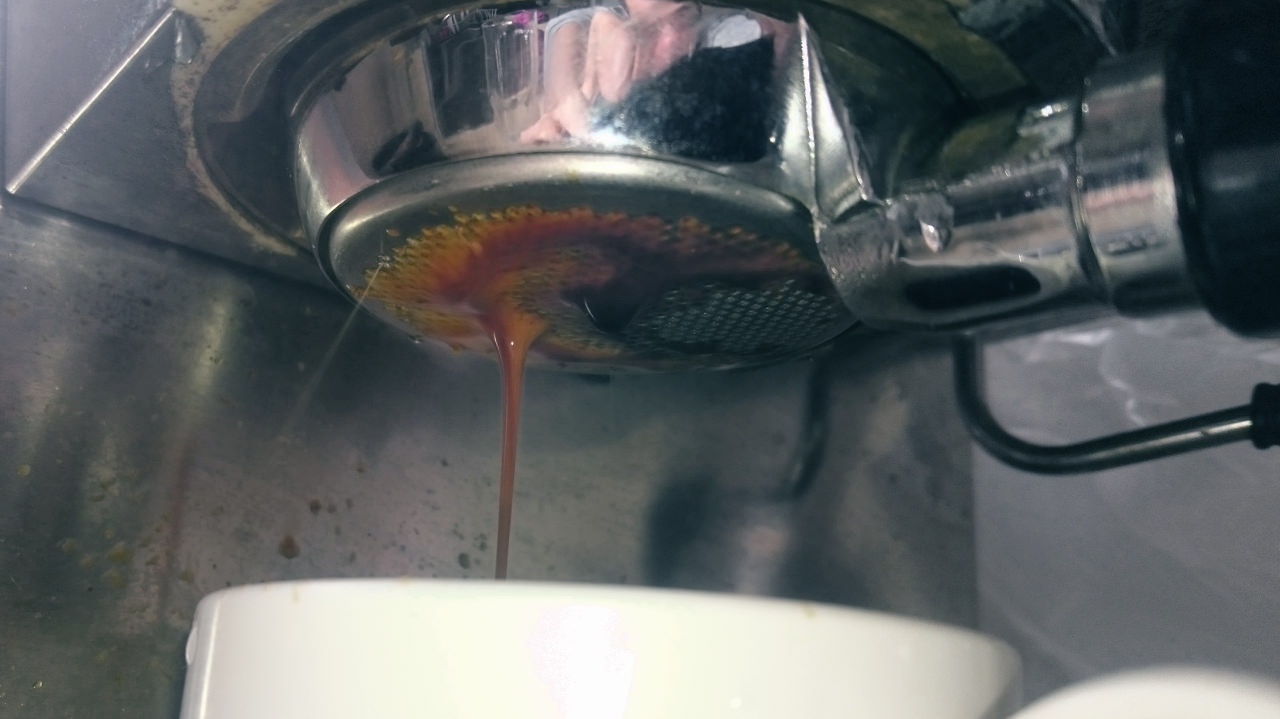I’ve been toying around with new ideas of coffee lately. Here is one that I think went particularly well. It started with red-eyes: you put a shot of espresso in filter coffee, just to boost acidity and body of the coffee whilst still keeping the basic aromatics in the coffee (making espresso kills quite a bit of those).
I then moved on to the idea of making cascara red-eyes. If red eyes were flavourful, perhaps then using the pulp of the fruit will yield a different thing all together? And indeed it did. The hibiscus-y nature of the cascara tea does accentuate the espresso. Then I wondered if I could push it further – what if the cascara “tea” was made under pressure – i.e. espresso?

I weighted 10g of cascara (from Colombia). These had a very wonderfully light floral/sweet note to it. The closest thing I’ve tasted to this is hibiscus juice.

And 12.6g of Kenya Mugaya AA beans. These beans, when made as espresso, taste like candied oranges with an apricot-like fruitiness as its main fragrance. It would pair very well with the floral nature of the cascara.

The portafilter was lined up with coffee first, then ground cascara on top of it. Grinding cascara in your typical burr grinder turns out to be a lot more difficult than expected. I had to go through all sorts of hoops to get my cascara in an espresso grounds consistency. The problem is that cascara, when ground, tends to get sticky and it sticks together like… pollen (of my favourite green flowers).
Another difficulty is that after grounding cascara, you tend to have to clean your grinder, or else your next batch of beans would not be properly ground. This is due to the sticky nature of cascara powder. As the photo above was my 5th or 6th try, I had then learned to first ground the cascara into a container, then ground coffee into the portafilter, and cover with cascara.

Cascara expands in hot water, so adding cascara to the portafilter causes weird things to happen to the flow of coffee (as can be seen in the picture above). After 5 tries or so, I realize that with a 15 second preinfusion, the result tastes the best. However, cleaning the espresso machine AFTER having cascara in it? Not something I recommend. I went through a full tank of water, cleaning the shower screen and the internals before I couldn’t find any traces of cascara.
I have yet to try putting in the cascara first (so that it’s at the bottom of the portafilter), then covering it up with coffee. I’ll leave that to when I have more time on my hands.
The Verdict
Cascara under pressure is very slightly different from cascara brewed in a french press. It is sharper in flavour compared to the roundedness of the french press brew. When put together with an espresso, this sharpness of flavour sorta blends well with the acidity of the espresso. At 10g, the fragrance very nearly overpowered the coffee’s fragrance – it was very much like drinking cascara tea with hints of espresso, but with a lot more body (like, a lot more), and much nicer mouthfeel.
Would I do it again? At this point, it would be far more economical for me to just make cascara tea and drop a couple of shots of espresso in them. The coffee is definitely different, but the cleaning up is definitely not worth my time.